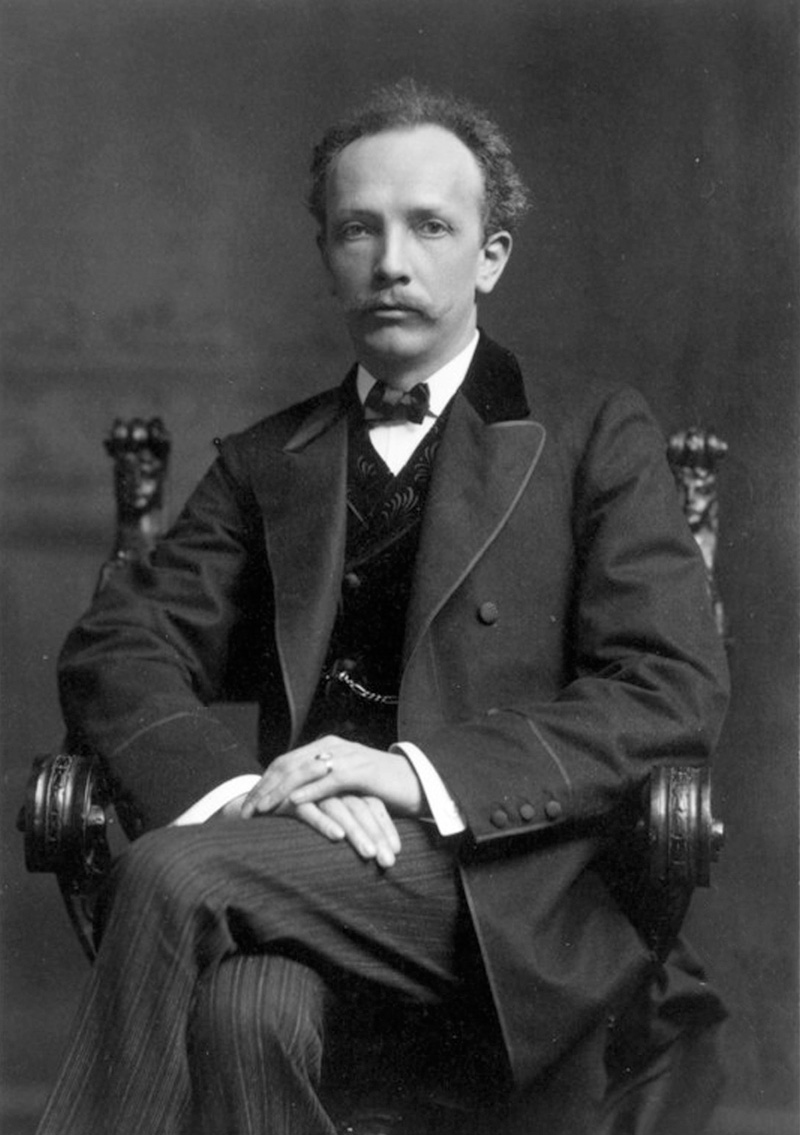Richard Strauss

Born: June 11, 1864, Munich
Died: September 8, 1949, Garmisch-Partenkirchen
Till Eulenspiegels lustige Streiche (“Till Eulenspiegel’s Merry Pranks”), Op. 28
- Composed: 1894-95
- Premiere: November 5, 1895, Gürzenich Orchestra, Cologne, Franz Wüllner conducting
- CSO Notable Performances:
- First: April 1905, Frank Van der Stucken conducting
- Most Recent: February 2018, Juraj Valcuha conducting
- Notable: January 1926 at Carnegie Hall, Fritz Reiner conducting
- Recordings: R. Strauss: Don Juan,Till Eulenspiegel released in 1977, Thomas Schippers conducting
- Instrumentation: 3 flutes, piccolo, 3 oboes, English horn, 2 clarinets, E-flat clarinet, bass clarinet, 3 bassoons, contrabassoon, 8 horns, 6 trumpets, 3 trombones, tuba, timpani, bass drum, crash cymbals, ratchet, tenor drums, triangle, strings
- Duration: approx. 15 minutes
After the deaths of Wagner and Brahms at the close of the 19th century, Richard Strauss emerged as one of the most important living German composers. Strauss composed in nearly all musical genres throughout his lengthy artistic career, but he is particularly well known for his orchestral tone poems. He embraced the genre of the programmatic tone poem as a creative and innovative musical expression of ideas.
Strauss grew up in Munich under the musical influence of his father, who introduced him to the music of Haydn, Mozart, Beethoven and Schubert. As Strauss progressed in his musical pursuits, he distanced himself from his father’s conservative tastes. In 1885, Strauss met Alexander Ritter, a composer and violinist, and a strong proponent of Wagner and Liszt. Ritter had significant influence on Strauss’ understanding of the progressive ideals of the “music of the future.” Strauss engaged more with the aesthetics of Wagner’s music and began to think about music and philosophy in new ways. The symphonic poems of Liszt impacted Strauss’ approach to his own tone poems, and Strauss adopted as his guiding principle that “new ideas must seek new forms.” By presenting each new subject in a new musical form, breaking conventions to set his ideas in meaningful ways, Strauss’ tone poems convey his intellectual curiosity and philosophical thought.
Strauss wrote his tone poems in two compositional phases, beginning with Macbeth, Don Juan, and Tod und Verklärung (“Death and Transfiguration”) in 1886–89. He then tried his hand at composing an opera, Guntram, but it was poorly received. Upset by the failure of his opera, Strauss channeled his energy into Till Eulenspiegel. He initially conceived of his Till project as a one-act opera, but he soon shifted gears, and Till Eulenspiegel became the first of his second set of tone poems. Till Eulenspiegel was followed by Also sprach Zarathustra (1896), Don Quixote (1897) and Ein Heldenleben (“A Hero’s Life”) (1898).
Strauss’ Till Eulenspiegel musically recounts the legends of the medieval German trickster. The folkloric stories introduce the character of Till Eulenspiegel, a mischievous prankster who mocks society through his various exploits. The full title of Strauss’ piece translates to “Till Eulenspiegel’s Merry Pranks, after the Old Rogue’s Tale, set in Rondeau Form for Large Orchestra.” The designation of the rondeau form is misleading, as the piece does not follow the traditional old French form, nor does it follow a conventional rondo pattern of repetition. Strauss explained that his innovative form for Till Eulenspiegel was “an expansion of rondo form through poetic content.” The piece has an episodic quality, returning to Till’s themes as it chronicles his adventures. Strauss did not at first provide a detailed program to accompany his tone poem, but he had written notes in his score indicating Till’s “merry pranks” and his irreverent attitude toward authority.
Till Eulenspiegel opens with a fairy tale flourish from the strings and woodwinds, a charming “once upon a time” gesture introducing the story. Till’s initial theme enters with the French horn, a playful repetitive ascending line that rhythmically maps onto the syllables of “Till Eulenspiegel.” This theme develops, jumping around among the instruments with fragments and pauses, and then Till’s character appears in a distinctive laughing motif in the clarinet.
Till soon begins to make mischief as the music continues in a flurry of activity. A quiet moment with fragments of Till’s theme in the bass suggests he might be sneaking around. His sneaking abruptly ends with a cymbal crash, after which the ratchet and frenzied orchestra depict Till crashing through a marketplace on horseback.
In Till’s next prank, he disguises himself as a priest in an ironic stately theme of viola, clarinet, and bassoon followed by a violin solo representing his mock sermon. He then flirts with pretty girls in gentle violin and woodwind solos, and, when he is spurned, the horns express Till’s displeasure by playing his theme in unison. Till continues on to mock a group of pompous pedagogues represented by the bassoon and bass clarinet.
The orchestra grows in intensity in anticipation of Till’s next escapade, but a sudden break followed by a snare drum roll and low, ominous brass announce Till’s arrest and condemnation. Among the foreboding brass chords, the clarinet interjects with Till’s protests, until finally, a high strangled shriek in the clarinet indicates his death. The epilogue concludes the piece with the opening “once upon a time” music, closing the story of Till’s adventures with the return of the narrative frame. However, Strauss allows Till to come back for one final prank, finishing the piece with a playful flourish of Till’s mischievous spirit.
Till Eulenspiegel premiered just months after Strauss completed it, and its first performance was a great success. Strauss effectively translated the humor of Till’s stories in his music, skillfully crafting his escapades in the interactions of the instruments and themes. Strauss also demonstrated his mastery of orchestration and manipulation of tone color to vividly depict scenes. Till Eulenspiegel has retained the success of its initial performance, gaining the status of Strauss’ most often performed orchestral piece.
—Dr. Rebecca Schreiber